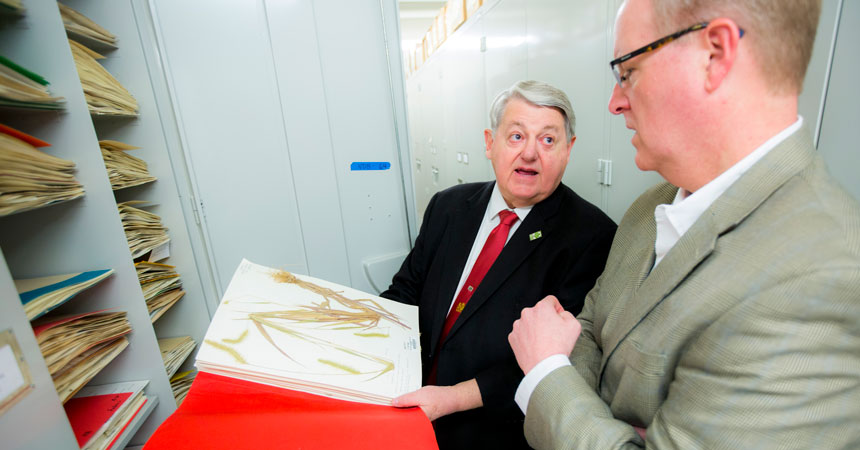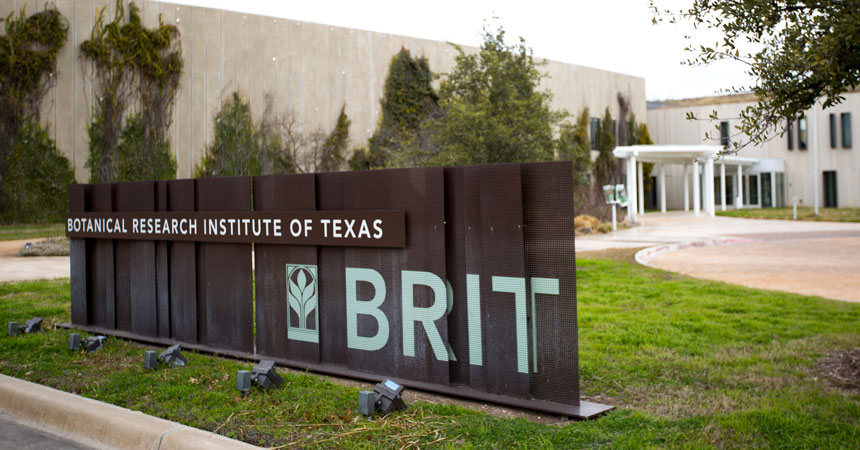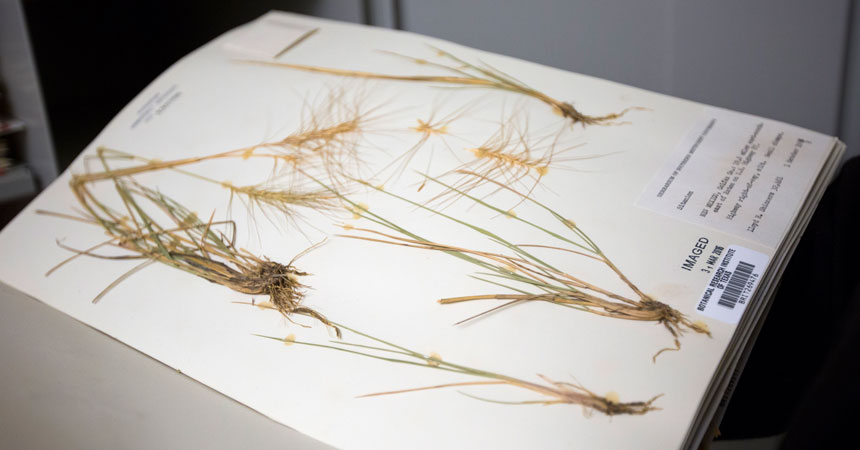BRIT partnership creates opportunities for research
By Jan Jarvis

They have been neighbors for nearly a decade.
Now the Botanical Research Institute of Texas and UNT Health Science Center will share more than a zip code. The two institutions will be collaborating on educational activities, community programs, research and more.
The agreement is a great opportunity that benefits both institutions, said Edward Schneider, PhD, President and Executive Director of BRIT.
HSC InsiderLearn more about UNTHSC’s people and programs by signing up for the weekly HSC Insider email. |
With more than 1.5 million species of plants, endless volumes of books and a large collection of illustrations, BRIT provides a rare opportunity that most medical and pharmaceutical students don’t have access to, Dr. Schneider said.
“We don’t know what secrets lie in the DNA of plants,” he said. “But there may be a cure for cancer.”
Many medicines come from plants, including a large percentage of cancer drugs, said Michael Allen, PhD, Associate Professor of Microbiology, Immunology and Genetics at UNTHSC.
“Having someone who is knowledgeable in plant studies helps us in research,” Dr. Allen said. “By understanding how bacteria works in plants, for example, we can better understand how it works in humans.”

Both institutions are expected to benefit from sharing research as well as access to lab space, facilities and scientific equipment, said Robert McClain, PhD., Associate Vice President for Research & Innovation.
“We have equipment on our campus that their scientists will have access to and they have tools we don’t have,” he said. “They are opening a new lab and they have some very expensive equipment that we need to use occasionally.”
For example, BRIT has a new state-of-the-art scanning electron microscope with a lens that has a 100,000 times magnification, compared to college labs that are about 1,000.
The agreement also is expected to strengthen both institutions’ research funding opportunities, Dr. McClain said.
“It’s an opportunity to put their scientists with our scientists in pursuing research funding,” he said. “Together we can create grant proposals that will be very strong and more competitive.”

Plans are for representatives from BRIT and UNTHSC to meet throughout the year to formulate opportunities to collaborate on various projects.
One project involves an annual lecture that will be given by a noted scientist and focus on plants that are important to pharmaceutics.
“We can bring post docs, faculty, retired faculty, or anyone from UNTHSC with an interest in research here to work on projects they are interest in,” Dr. Schneider said. “We can help researchers from both institutions be as successful as possible.”






Social media